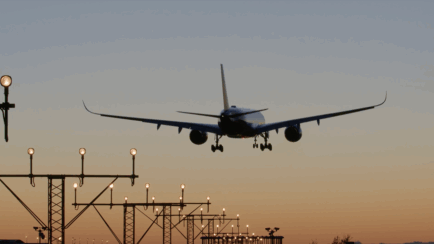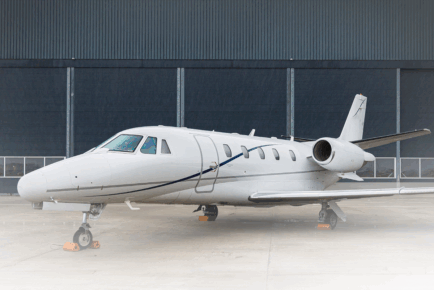
Download article in PDF format
World Aircraft Sales, Sept 2013
by Ken Elliott
Forever the frugal partner, my wife for years diligently selected the lower cost shoe, then complained of foot pain and sought the advice of medical experts. She will willingly admit to ignoring my suggestion that the quality and subsequently price of the shoe is directly related to the comfort of the foot. One day after all other avenues were exhausted she relented and purchased an expensive pair of Walking Company shoes and has never looked back on the need to evaluate value when making choices.
Older and wiser today we both make decisions based mostly on a value equation. Another great example of that is choice of vacations, particularly accommodation. For some folks the vacation is about sightseeing and not where you stay. After experiencing several hotel mishaps, for us it became very important to consider the hotel. However that choice is subject to a value equation where price is only one of several key factors.
When it comes to aircraft and specifically avionics it is highly likely that the value equations used in non-aviation related decisions can still be applied.
For this article I will focus on the case for cockpit upgrades that can extend from Electronic Flight Bags (EFB’s) to a full new avionics suite.
Some Typical Cockpit Upgrades
The other day I discussed the topic of EFB’s with a client and the immediate request was – “May I install I-Pads as Class 1 devices?” So to begin with EFB’s and specifically I-Pads are a popular low cost cockpit upgrade to start. Also there is a trend toward the use of tablet interface devices that allow existing aircraft avionics to be integrated and shown on the actual flight bag. An extension of this trend is the ability to monitor and download aircraft performance at minimal cost.
At the other end of the spectrum would be a full glass cockpit. Usually the glass cockpit upgrade brings in other features such as weather, maps and enhanced vision displayed on primary or multi-function monitors.
Because most avionics require some form of pilot interface, just about any aircraft electronics upgrade outside of cabin entertainment involves something new in the cockpit. As a result there are many cockpit changes that fall in the range of complexity between the EFB and the full glass panel.
A few of these would be FMS, ADS-B, TCAS, TAWS, HUD-EVS, Electronic standby displays, Satcom and various levels of data com.
Required v Desired
Currently assuming the business jet you own or are looking at is up to date for the US, you primarily only need to be concerned about ADS-B Out in 2020 as a requirement. Internationally there is ADS-B, PBN and data com (EU-2015) mandates either in place or on the horizon. Note other non cockpit requirements around CVR, FDR and ELT’s that may already be in place.
WAAS-LPV, weather, electronic charts, RNP, electronic instruments including engine and performance are some desired but not required popular upgrades.
Generally the higher the turn key price the harder the business case and hence the lower the popularity. Full cockpit upgrades take a lot of business case development in order to move from an interest to actually closing a deal.
Developing the Business Case
When it comes to value in avionics there are certain forces against. One of these is what the CEO and corporate executives ‘see’ or can ‘use’. Sitting in the cabin there are not a lot of cockpit benefits that filter through or are there?
There is the financial benefit of less time, fuel and ‘wear + tear’ some avionics upgrades do bring. These may be quantified and provided as a return on investment (ROI) over a given time period. There is the aspect of safety and situational awareness that many upgrades provide, but are difficult to quantify. However improving efficiency, reducing pilot workload and stress all relate to added safety and awareness.
Operator Value Considerations
Value considerations truly begin at what you have to spend – and that may be what can be spent over a period of time. Some MROs develop multiple Supplemental Type Certificates (STCs) for a given cockpit system allowing the work to be completed in phases, launching aircraft back into service each time and spreading out the costs to the operator.
One operator asked me recently, “What does it cost; how long will it take to install; what does it do; and what is my ROI?” Structuring a value equation around that is a great place to start. So if there is struggle in fully and convincingly responding to those basics that will satisfy a flight department, it is time to bring in equally convincing business cases that will bring the sale case back toward the center of Figure 1.
Note: Vref and Blue Book are great tools for determining avionics’ financial value related to overall aircraft equipage. Also note that Universal Avionics and Duncan Aviation have a great WAAS-LPV ROI calculator on Duncan’s website.
Clearly mandates ‘sell’ upgrades as with in the past ELTs, RVSM, TCAS, TAWS and soon with ADS-B Out – all, by the way, have some relevance to safety. Other factors can, however, be equally persuasive and at least elective from an operator’s perspective.
The FAA and international authorities sometimes truly get it right and provide – what I call – ‘enablers’ that sit well with many operators. Perhaps the best avionics example for non-commercial aircraft in the US is WAAS-LPV, where ILS-like approaches can be flown with minimal ground infrastructure required. While they are a great business case for the FAA (less cost on the ground), they are an even greater gain for aircraft operators.
There are over 3,100 WAAS (LPV) approaches versus 1,524 Cat-I and II ILS. This provides additional lower precision landings for equipped aircraft. The FAA has further enabled this benefit or value by allowing 100 FT DH into all the LPV and ILS Cat-I approaches if straight-in, when an aircraft is equipped and certified with HUD and EVS (EFVS). But that is not all. The FAA now has a Notice of Proposed Rule Making (NPRM) that will allow suitably equipped aircraft to go all the way down to 0/0 in low-visibility.
Some would argue that a bigger ‘operator perceived’cockpit benefit is the EFB. EFBs provide significant benefit for the financial cost while tooling the pilot with all sorts of features, saving time and the weight of paper.
There are a number of other value considerations over and above those previously mentioned that may be very meaningful for operators when considering cockpit upgrades – see Table B (above). I have only brushed the surface of value as it relates to avionics cockpit upgrades – but there are many more resources to help you, some of which include the Aircraft Electronics Association (AEA) www.aea.net and National Business Aviation Association (NBAA) www.nbaa.org, which are great resources for Avionics value research. Meanwhile Flight Safety Foundation (FSF) www.flightsafety.org and EASA’s Skybrary www.skybrary.aero are powerful tools for safety and awareness value cases.
Ken Elliott is an avionics veteran of 40 years and more recently focused on NextGen. His work within the NextGen Advisory Council sub-committees brings him close to current and intended development effort. Equally, his specialization in low-vision operations provides a deeper insight into one of the pillars of NextGen. Ken has served the aviation industry on three continents from light GA to large corporate aircraft. His current employer Jetcraft is a leading aircraft brokerage company with worldwide presence. More from www.www.jetcraft.com, email: [email protected]
SIGN UP FOR OUR MONTHLY JETSTREAM RECAP
Don't miss future Jetstream articles. Sign up for our Jetcraft News mailing list to receive a monthly eblast with links to our latest articles. Click to join the 1,800+ subscribers on our mailing list.





